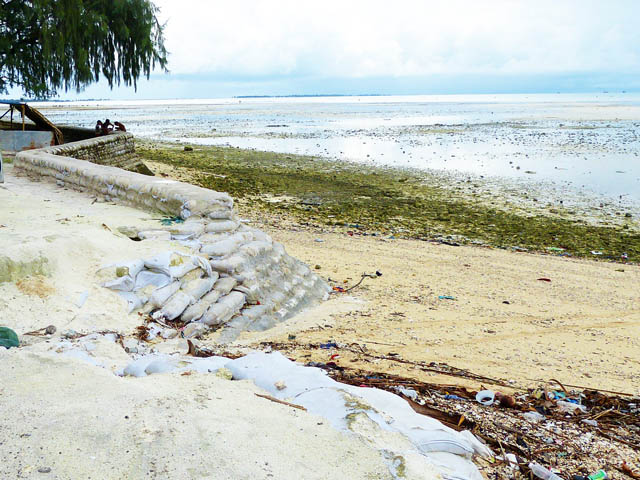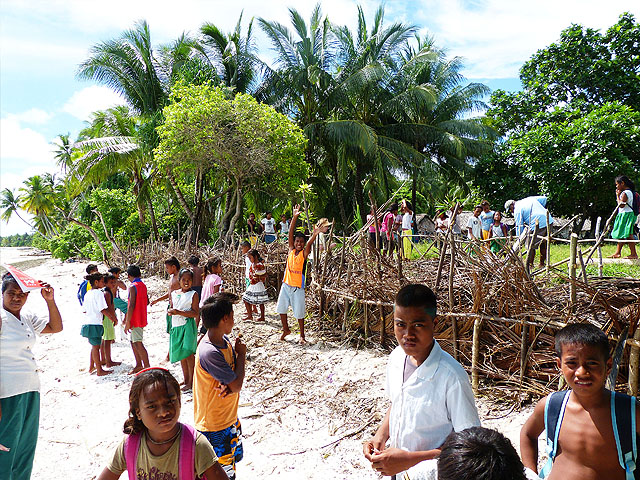
Aonobuaka is a village of almost 350 people in Abaiang, Kiribati. On the nearby coastline, support from USAID and the Secretariat of the Pacific Regional Environment Programme (SPREP) has made possible a project that is transforming how local communities protect their land from erosion.
In June 2015, when a team from the Government's Environment and Conservation Division (ECD) visited Aonobuaka, they learned that the community had banned the building of seawalls.
"They believed that building a seawall is not best for them. So they setup a community agreement, that nobody, no family, or no clan is allowed to build a seawall on the coastline at Aonebuka," said Ms. Ratita Bebe from ECD.
The Shoreline Protection Guidelines of Kiribati state: "Seawalls can sometimes increase the rate of erosion in front of the seawall due to wave reflection and at the ends of the structure caused by wave focussing. When all available sediment has been removed in front of the wall, down drift areas will no longer receive sediment and erosion may be accelerated as a result of building the wall".

If a landowner builds a seawall, their neighbours may experience significant erosion. In a village such as Aonobuaka, this can cause considerable social friction and disputes that lead to lengthy community or government arbitration.
"They want to maintain their beach naturally. So, as a whole community they came up with a strategy that provides solutions. The decision was not by made by one man who had an idea for the rest of the community, they all got together and decided on what was best for them," said Ms. Bebe.
"They all agreed not to build even one seawall and to take care of their coastline. It really links well to the idea of not building a seawall because we introduced the local 'te buibui' method and we encourage these communities to construct this method themselves with their own materials," said Mr. Arawaia Moiwa from ECD.

Wuth funding from USAID, Staff from the Kiribati Government's Environment and Conservation Division with Dr Joanna Ellison from the University of Tasmania, have been demonstrating the 'te buibui' technique throughout Abaiang atoll in Kiribati with support from community volunteers to undertake the work. 'Te buibui' involves building a brush structure from local materials including branches, palm fronds and coconut fibre string than catches sediment and allows for coastal dunes and beaches to rebuild.
These natural solutions being implemented by the project also include controlling access to allow vegetation recovery and beach vegetation planting.
Through funding assistance the Government of Australia under its International Climate Change Adaptation Initiative (ICCAI), SPREP previously developed a community guide for "Coastal Ecosystem-based Rehabilitation" which explains how to assess beach condition, decide on actions needed, and how to undertake this type of rehabilitation.
Monitoring in Kiribati is finding that sites established in 2013 are showing substantial improvement as surveying has found positive accretion of sand at all coastal Ecosystem-based Adaptation (EbA) project sites.